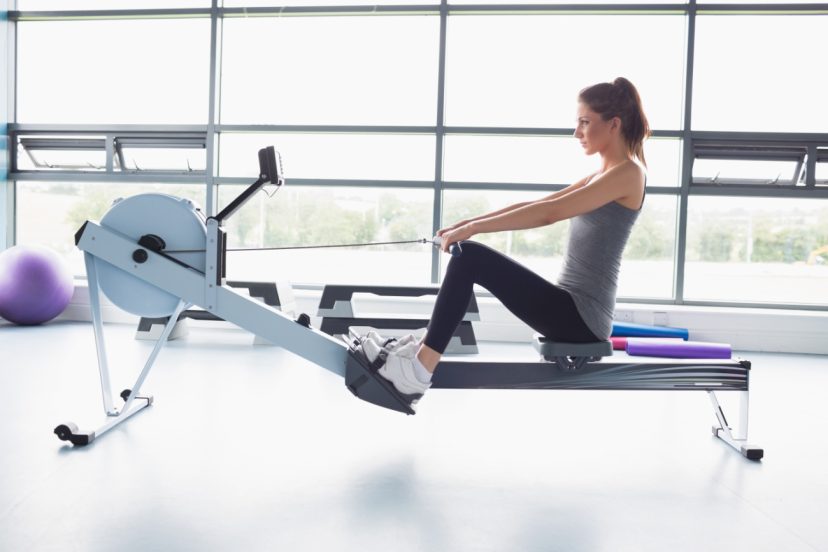What is Erging? A Complete Guide for Beginners
Hey there! If you’re looking for a fantastic way to improve your fitness and overall health, you’ve come to the right place. In this article, I’ll be introducing you to the world of erging and guiding you through the process of getting started. So, what exactly is erging? Let’s find out!
What We will Cover:
- Erging, What does it Mean?
- Types of Erging Machines
- Benefits of Erging Machnes
- Getting Started with Erging
- Proper Erging Technique
- Erging Workouts for Beginners
- Common Mistakes to Avoid
- Tips for Erging
Erging, what does it mean?
The term “ergometer” or simply “erg” is derived from the word “ergometry,” which refers to the measurement of work performed by the body during exercise. In the context of rowing, an ergometer is a device that measures and displays various performance metrics, such as distance rowed, time elapsed, and speed. It provides objective feedback on the user’s performance and allows for comparisons between different workouts or individuals.
While the terms rowing machine and erg are often used interchangeably, some people might use the term “erg” specifically when referring to the equipment’s performance measurement capabilities or when discussing rowing as a competitive sport. In the rowing community, “erg” is commonly used to refer to the Concept2 Indoor Rower, a popular brand of rowing machine widely recognized for its accuracy and use in rowing competitions.
Types of Erging Machines
There are various types of erging machines available, with the most common one being the rowing machine or rower. Other popular options include the water rowing machine, air rower, and magnetic rowing machine. Each type offers a slightly different experience, but the fundamental principles remain the same.
Benefits of Erging
Erging offers a wide range of benefits for both your physical and mental well-being. Let’s explore some of the key advantages of incorporating erging into your fitness routine:
Cardiovascular Fitness
One of the primary benefits of erging is improved cardiovascular fitness. It gets your heart pumping and increases your lung capacity, helping to strengthen your heart and improve circulation. Regular erging sessions can contribute to a healthier cardiovascular system, reducing the risk of heart disease and other related conditions.
Full-Body Workout
Erging engages multiple muscle groups, providing a comprehensive full-body workout. The major muscle groups targeted include the legs, back, core, and arms. By incorporating erging into your exercise routine, you can tone and strengthen these muscles, leading to improved overall strength and endurance.
Low-Impact Exercise
Unlike activities such as running or jumping, erging is a low-impact exercise that puts less stress on your joints. This makes it an excellent option for individuals with joint issues or those recovering from injuries. Despite being gentle on the joints, erging provides an effective workout that still challenges your muscles and cardiovascular system.
Weight Loss and Muscle Toning
If weight loss is one of your goals, erging can be a fantastic tool to help you shed those extra pounds. It is a high-intensity exercise that burns calories and promotes fat loss. Additionally, erging helps in building lean muscle mass, which boosts your metabolism and aids in long-term weight management.
Stress Reduction
Erging is not just about physical fitness; it also offers mental health benefits. Engaging in a rhythmic and repetitive motion while erging can have a calming effect on the mind, reducing stress and anxiety. It provides an opportunity to focus on your breathing and clear your thoughts, promoting relaxation and a sense of well-being.
Getting Started with Erging
Now that you’re familiar with the benefits of erging, let’s dive into the steps to get started:
Choosing the Right Erging Machine
Before you begin, it’s essential to select the right erging machine that suits your needs and preferences. Consider factors such as your budget, available space, and the type of resistance mechanism you prefer. Try out different machines if possible to find the one that feels comfortable and fits your goals.
Setting Up the Erging Machine
Once you have your erging machine, make sure to set it up correctly. Follow the manufacturer’s instructions for assembly and adjust the settings to your desired resistance level. Ensure that the foot straps are secure and that the seat slides smoothly along the rail.
Proper Erging Technique
To maximize the effectiveness of your erging workouts and minimize the risk of injury, it’s crucial to maintain proper technique. Sit tall with a straight back, engage your core muscles, and hold the erging handle with a relaxed grip. Push through your legs, then lean back slightly, and finally, pull the handle towards your chest, focusing on a smooth and controlled motion.
Erging Workouts for Beginners
As a beginner, it’s important to start gradually and build up your endurance and technique. Here’s a simple guide for a beginner erging workout:
Warm-up and Stretching
Begin each session with a 5-10 minute warm-up to prepare your muscles for exercise. This can include light rowing, dynamic stretches, or a brisk walk. Pay special attention to stretching your legs, back, and shoulders.
Beginner Erging Program
Start with shorter erging sessions, around 10-15 minutes, and gradually increase the duration as you build stamina. Aim for consistency rather than intensity in the beginning. Focus on maintaining proper form and gradually increasing the resistance level as you progress.
Monitoring and Tracking Progress
Keep track of your erging workouts to monitor your progress over time. Note the distance covered, time taken, and any other relevant metrics. This will help you set goals, track improvements, and stay motivated on your erging journey.
Common Mistakes to Avoid
As you embark on your erging journey, be mindful of these common mistakes to ensure a safe and effective workout:
Incorrect Posture and Form
Maintaining proper posture and form is crucial for avoiding injuries and maximizing the benefits of erging. Avoid slouching or rounding your back, and be mindful of your positioning throughout the entire stroke.
Overtraining and Burnout
While it’s important to challenge yourself, overtraining can lead to burnout and increased risk of injury. Listen to your body and allow for rest days to promote recovery and avoid overexertion.
Neglecting Rest and Recovery
Rest and recovery are just as important as the exercise itself. Make sure to include rest days in your erging routine to give your body time to repair and rejuvenate. This will help prevent overuse injuries and optimize your performance.
Tips for Erging
To ensure a safe and enjoyable erging experience, consider the following safety tips:
Warming Up and Cooling Down
Always begin your erging session with a proper warm-up to prepare your muscles and gradually increase your heart rate. Similarly, end your workout with a cool-down period that includes gentle rowing and stretching. This helps prevent muscle soreness and promotes flexibility.
Using Proper Footwear
Wear supportive athletic shoes that provide stability and cushioning while erging. This helps prevent foot discomfort and ensures a secure grip on the foot straps. Avoid erging barefoot or with unsuitable footwear to minimize the risk of foot injuries.
Avoiding Excessive Resistance
While it’s important to challenge yourself, avoid setting the resistance too high, especially as a beginner. Excessive resistance can strain your muscles and joints, leading to injuries. Gradually increase the resistance as you become more comfortable and confident with your erging technique.
Hydration and Nutrition
Stay hydrated before, during, and after your erging workouts. Drink water regularly to replenish fluids lost through sweat. Additionally, fuel your body with a balanced diet that includes carbohydrates for energy and protein for muscle recovery.
Conclusion
Congratulations! You’ve now gained a comprehensive understanding of erging and its benefits for beginners. By incorporating erging into your fitness routine, you can improve cardiovascular fitness, achieve a full-body workout, and enjoy a low-impact exercise option. Remember to choose the right erging machine, maintain proper technique, and start with a beginner program. Safeguard your erging experience by avoiding common mistakes, practicing safety tips, and prioritizing rest and recovery. So, grab an erging machine and embark on your journey to better health and fitness!
FAQs (Frequently Asked Questions)
Q: Can Erging help with weight loss?
A: Yes, erging is an effective exercise for weight loss. It burns calories, promotes fat loss, and helps build lean muscle mass, contributing to a more toned and slim physique.
Q: How often should I Erg?
A: The frequency of erging depends on your fitness goals and overall schedule. Aim for at least three to four sessions per week, allowing for rest days in between to promote recovery.
Q: Is Erging suitable for all ages?
A: Erging is a low-impact exercise suitable for people of various ages. However, it’s always advisable to consult with a healthcare professional, especially if you have any pre-existing medical conditions or concerns.
Q: Can Erging cause any injuries?
A: While erging is generally safe, improper technique or overuse can lead to injuries such as strained muscles or joint pain. It’s important to learn and maintain proper form and gradually progress in your workouts.





